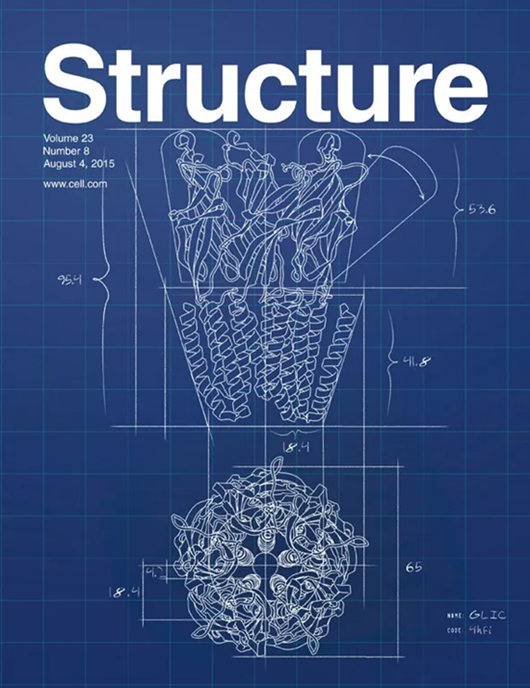乒乓球和冷冻:伏马菌素 B1 对神经酰胺合成酶抑制作用的结构性启示
IF 4.4
2区 生物学
Q2 BIOCHEMISTRY & MOLECULAR BIOLOGY
引用次数: 0
摘要
伏马菌素 B1(FB1)以鞘脂生物合成为目标,抑制神经酰胺合成酶。在本期《结构》杂志上,Zhang 等人1测定了酵母神经酰胺合成酶与 FB1 及其酰化衍生物酰基-FB1 复合物的冷冻电镜结构,揭示了 FB1 N-酰化的两步 "乒乓 "机制及其如何抑制神经酰胺合成酶。本文章由计算机程序翻译,如有差异,请以英文原文为准。
Ping, pong, and freeze: Structural insights into the inhibition of ceramide synthase by Fumonisin B1
Fumonisin B1 (FB1) targets sphingolipid biosynthesis, inhibiting ceramide synthases. In this issue of Structure, Zhang et al.1 determined the cryoelectron microscopic structures of yeast ceramide synthase in complex with FB1 and its acylated derivative, acyl-FB1, revealing a two-step “ping-pong” mechanism for the N-acylation of FB1 and how it inhibits ceramide synthase.
求助全文
通过发布文献求助,成功后即可免费获取论文全文。
去求助
来源期刊

Structure
生物-生化与分子生物学
CiteScore
8.90
自引率
1.80%
发文量
155
审稿时长
3-8 weeks
期刊介绍:
Structure aims to publish papers of exceptional interest in the field of structural biology. The journal strives to be essential reading for structural biologists, as well as biologists and biochemists that are interested in macromolecular structure and function. Structure strongly encourages the submission of manuscripts that present structural and molecular insights into biological function and mechanism. Other reports that address fundamental questions in structural biology, such as structure-based examinations of protein evolution, folding, and/or design, will also be considered. We will consider the application of any method, experimental or computational, at high or low resolution, to conduct structural investigations, as long as the method is appropriate for the biological, functional, and mechanistic question(s) being addressed. Likewise, reports describing single-molecule analysis of biological mechanisms are welcome.
In general, the editors encourage submission of experimental structural studies that are enriched by an analysis of structure-activity relationships and will not consider studies that solely report structural information unless the structure or analysis is of exceptional and broad interest. Studies reporting only homology models, de novo models, or molecular dynamics simulations are also discouraged unless the models are informed by or validated by novel experimental data; rationalization of a large body of existing experimental evidence and making testable predictions based on a model or simulation is often not considered sufficient.
 求助内容:
求助内容: 应助结果提醒方式:
应助结果提醒方式:


